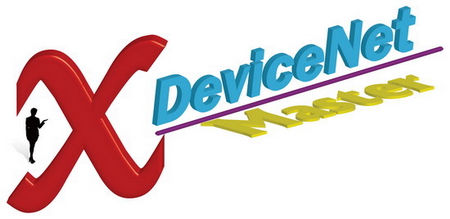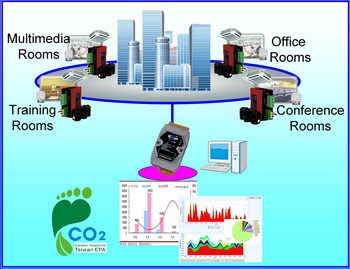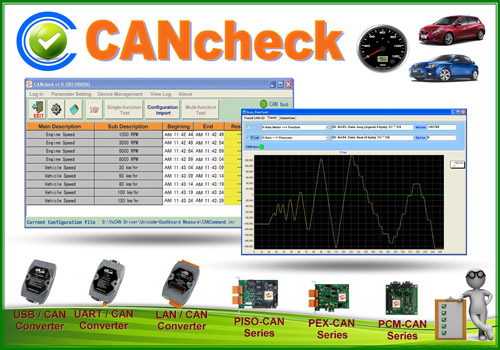PEX-CAN200i-D
PEX-CAN200i-T |
|
|
|
|
| |
|
|
|
|
PEX-CAN200i can represents an economic solution of an active CAN board with express PCI bus. It has 2 independent CAN bus communication ports with 5-pin screw terminal connector or 9-pin D-sub connector, and has the ability to cover a wide range of CAN applications. Besides, PEX-CAN200i uses the new CAN controller Phillips SJA1000T and transceiver 82C250, which provide bus arbitration, error detection with auto correction and re-transmission function.
|
|
|
|
| Applications |
|
|
|
- CAN bus communication application
- DeviceNet, CANopen, CAN J1939, SDS(System Wide Network) protocol application
- Control System
- Building Automation
- Factory Automation
- Distributed data acquisition
|
 |
|
|
|
|
| Features |
|
|
|
-
PCI Express Interface
-
Compatible with CAN 2.0 parts A and B
-
Fully compatible with ISO 11898-2 standard
-
Support CAN bard from 10K to 1M bps
-
2500 Vrms photo couple isolation on the CAN bus
-
33 MHz, 32 bit, X1 PCI Express bus (It can be plugged into the PCI-Express x1, x4, x8, or x16 slot)
-
Build-in jumper to select 120 ohm terminal resister
-
3KV galvanic isolation
-
2 independent CAN channels
-
Direct memory mapping to the CAN controller
-
Provide VB, VC++, Delphi, BC++ demos
|
|
|
|
| Hardware Architecture |
|
|
|
 |
|
|
|
| Software Architecture |
|
|
|
 |
|
|
|
| RTX Driver |
|
|
|
| In order to satisfy the users to apply the RTX system, ICPDAS provides the RTX driver for PISO-CAN series CAN card. If users want to combine the CAN communication interface in their time-critical system, the RTX driver of the PISO-CAN series CAN cards can help them to do this easily and quickly. Furthermore, the name and parameters of the APIs in the RTX driver are the same as in the Windows driver. Users don’t need to pay more efforts to study how to use the APIs of the RTX driver if they have used the Windows driver before. The RTX driver increases the additional worth of the PISO-CAN series CAN cards, and satisfies the users to get the highly real-time system. By owing to the feature of high price performance and highly real-time, PISO-CAN series CAN cards will be applied in more wide and more variant CAN applications.
Features:
-
The name and parameters of the APIs in RTX driver are the same as them in the Windows driver. Users don’t need to learn the new usage if they have used the PISO-CAN series CAN card before
-
If the PISO-CAN series CAN card can get the independent IRQ, it supports interrupt function
-
Direct I/O control and highly real-time feature
-
Support Windows2000 SP4, and Windows XP SP2 OS
-
Support RTX version 8.1 and 2011

Real-time Test:
-
Platform: Windows XP SP2+PEX-CAN200i
-
Device: I-7186EXD-CAN with MiniOS7 (single tasking OS)
-
Send and receive 10000 CAN 2.0B 8-byte messages. Repeat this procedure for 10 times

|
|
|
|
| SocketCAN Driver |
|
|
|
| The SocketCAN is based on the Linux operating system, and it contains the implementation interface of the network stack and the hardware driver. The hardware manufacturers program the hardware driver for the SocketCAN, and the network stack provides the standard BSD Socket APIs for users. Therefore, from the users’ point of view, they can easily and quickly program their applications without being familiar with the various APIs of the different hardware interface through the SocketCAN network stack.

We have provided the SocketCAN drivers for several kinds of CAN interface cards. Users can implement their SocketCAN-based application on the Linux platform by using these cards. Besides, we also support static library of CANopen/DeviceNet master on x86 hardware platform. It can help users communicate with CANopen/DeviceNet slaves more easily.
Features:
-
Support Linux kernel version 2.6.31~3.2.20 (x86 hardware platform only)
-
Provide CANopen/DeviceNet master static library
-
Standard interface for SocketCAN package. Users can use extended BSD socket APIs, you can program the CAN application as building a socket program
-
Support Virtual CAN interface. Users can map several virtual CAN port into one physical CAN port. Each virtual CAN port has its own socket. Through these sockets, users can build the multi-thread application more easily
-
Provide the RAW socket, CANopen master and DeviceNet master demos
-
Good price-performance for economical applications

Hardware platform:Intel(R) Core(TM)2 CPU 6320 @ 1.86GHz, DDR2 667MHz 1.5GB
Software platform:Kernel-2.6.32, Distro- Debian GNU/Linux 5.0
|
|
|
|
| Utility |
|
|
|
-
Can be a CAN system monitor tool with CAN cards
-
It is a good tool to test CAN system
-
Send/Receive/Record CAN messages.
-
Provide cyclic transmission function
-
Record the CAN messages with filtered ID and time stamp
-
Support: Win98/Me/2000/XP-32bit/7-32bit/7-64bit (not for Win 7 Ultimate-64bit)
|
|
|
|
| ActiveX Tool |
|
|
|
In order to use PISO-CAN200/400 easier, we provide a PISOCANX ActiveX component (OCX).
It is a useful element to develop the PISO-CAN200/400 application on different program development platform, and it also
help users to reduce their development period.
Specially, users can use this in their SCADA softwares which support ActiveX technology. It would be possible to use SCADA
software to control or monitor CAN devices. If users want to get PISOCANX, it will be found after installing the
PISO-CAN200/400 driver with 1.16 version or later. |
|
|
|
| LabVIEW Tool |
|
|
|
In order to apply the PISO-CAN200/400
to CAN network with NI LabVIEW, we provides a LabVIEW 7/7.1 toolkit for
the purpose. It is a useful tool to develop the CAN-relative application
in NI LabVIEW environment by using PISO-CAN200/400. It is easy to
use and can help user to rapidly reduce their program development
cycle. If users want to develop a LabVIEW industrial application
with CAN network, the LabVIEW CAN driver is very helpful.
- Support extension arbitration id
- Support debug receive mode
- Start byte of output
- Support LabVIEW 7/7.1
- Scaling range to select
- Two languages, German and English
- Selectable data rates (baud): 10K, 20K, 50K,
125K, 250K, 500K, 800K, 1M, and user defined
|
|
|
|
| DASYLab Tool |
|
|
|
In order to easy to use the PISO-CAN200/400 to CAN network for user. We provides a DASYLab version 8.0 toolkit for the purpose. It is a useful tool to develop the CAN-relative application in DASYLab environment by using PISO-CAN200/400. It can help user to rapidly reduce their program development cycle. If users want to develop a DASYLab industrial application with CAN network, the DASYLab CAN driver is very helpful.
- Support extension arbitration id
- Support maximum 64 CAN ports
- Start byte of output
- Scaling range to select
- Sample rate from 50 ~ 5000 Hz
- Two languages, German and English
- Selectable data rates (baud): 10K, 20K, 50K,
125K, 250K, 500K, 800K, 1M, and user defined
|
|
|
|
| CANopen Tools |
|
|
|
In order
to apply the CANopen protocol on the PISO-CAN200/400 easily,
we provides two CANopen application Tools, which are CANopen library
and CANopen diagnosis application tool. If users want to develop
an industrial application with CANopen protocol, the CANopen library
is very helpful to be applied with the PISO-CAN200/400 as the
CANopen devices with the features of CANopen protocol. Besides,
if the monitor and diagnosis of CANopen message on the CAN network
is considered, the CANopen diagnostic application tool can be
used to achieve this purpose.
- Follow DS301 version 4.02
- Auto detecting CANopen slave devices
- IO monitor
- Dynamic PDO
- NMT master
- Support the Guarding and Heart beat protocol
and SYNC message.
- Selectable data rates (baud): 10K, 20K, 50K,
125K, 250K, 500K, 800K, 1M
More detail information‥‥ |
|
|
|
| DeviceNet Tools |
|
|
|
DeviceNet
is a low level network that provides connections between simple
industrial devices (sensors, actuators) and higher level devices
(controllers). It allows direct peer to peer data exchange between
nodes in an organized and, if necessary, deterministic manner.
We provides DeviceNet library for users to develop the specific
DeviceNet application by PISO-CAN200/400. In addition, we also
provide the DeviceNet diagnosis application tool to monitor and
diagnose the DeviceNet message through CAN network. It provides
the DeviceNet communication protocol interface to control and
analysis the DeviceNet slaves.
- Auto detecting DeviceNet slave devices
- IO monitor
- Message monitor & diagnosis
- Support UCMM capable devices
- Support the Predefined Master/Slave connection
set
- Selectable data rates (baud): 125K, 250K,
500K

More Info‥‥
|
|
|
|
| Linux Distributions |
|
|
|
Linux kernel version of distributions |
Linux kernel Distribution |
2.6.37 |
Debian GUN/Linux |
4.0 |
Fedora Core |
2/3/4/5/6/7/8 |
Mandrake(Mandriva) |
10.0/10.1/10.2 |
Red Hat Enterprise |
4/5 |
Ubuntu |
7.04 |
SUSE |
9.1/9.2/9.3/10.0 |
|
|
|
|
| Performance Test |
|
|
|
Test development:
OS:Windows XP SP 3
CPU:Intel Core 2 Duo 2.00 GHz
RAM:512 MB
Baud Rate(bps) |
CAN 2.0 A |
CAN 2.0 B |
Frame per sec. |
Frame per sec. |
1000 k |
7493 |
6387 |
800 k |
6185 |
5249 |
500 k |
4088 |
3463 |
250 k |
2134 |
1808 |
125 k |
1096 |
924 |
50 k |
438 |
370 |
20 k |
175 |
148 |
10 k |
88 |
74 |
Note:The test result is the average value of receiving 100000 CAN messages.
|
|
|
|
| Software |
|
|
|
| Item |
Description |

CAN bus Power Meter |
This is the software solution for the CAN bus power meter(PM-213x-CAN). It is convenient to collect the distributed power information via CAN bus. [more...] |

CAN OPC Server |
This is the OPC server for all the SCADA like LabVIEW, iFix, DASYLab and etc. By using the OPC server, the users be able to control any CAN devices via the famous SCADA. [more...] |

VxCAN Driver |
The VxCAN driver is the virtual CAN driver for all CAN converters and CAN master products. Even using different products, the users could use the same APIs to develop any CAN applications. [more...] |

VxCAN Utility |
The VxCAN Utility, a diagnostic and test software tool, is designed to unleash the power of all CAN products of ICP DAS. It is based on the Virtual CAN technique which creates the virtual CAN ports to match the physical CAN interfaces of the installed products. [more...] |

InduSoft Driver |
The IndoSoft is one of the famous and high performance SCADA. Nowaday, it supports the CAN, CANopen and DeviceNet driver for all the coresponding converter or master series products. [more...] |

CANcheck |
This is the software for diagnosing and testing the user's CAN devices. The graphical interface is ready-made and easy to operate. [more...] |

CAN Test Tool |
The CAN test tool can help users to test the CAN communication of CAN series of ICP DAS by the simple steps. This tool is based on VxCAN driver and supports most of all CAN products of ICP DAS [more...] |
|
|
|
|
| Hardware Specifications |
|
|
|
|
|
|
Bus Interface |
Type |
33 MHz, 32 bit, X1 PCI Express bus |
CAN Interface |
Controller |
NXP SJA1000T with 16 MHz clock |
Transceiver |
NXP 82C250 |
Channel number |
2 |
Connector |
9-pin male D-Sub |
5-pin screwed terminal block |
Baud Rate (bps) |
10 k, 20 k, 50 k, 125 k, 250 k, 500 k, 800 k, 1 M (allow user-defined baud rate) |
Isolation |
3000 VDC for DC-to-DC, 2500 Vrms for photo-couple |
Terminal Resistor |
Jumper for 120 Ω terminal resistor |
Power |
Power Consumption |
100 mA @ 12 V, 100 mA @ 3.3 V |
Software |
Driver |
Windows XP/7/8/10 (32-bit/64-bit OS), Linux 2.6.x ~ 4.8.0, LabView, DASYLab, InduSoft |
Library |
VB 6.0, VC++ 6.0, BCB 6.0, Delphi 4.0, C#.Net, VB.Net |
Mechanism |
Dimensions |
120mm x 22mm x 85mm (W x L x H) |
Environment |
Operating Temp. |
0 ~ 60 ℃ |
Storage Temp. |
-20 ~ 70 ℃ |
Humidity |
5 ~ 85% RH, non-condensing |
|
|
|
|
| Ordering Information |
|
|
|
| PEX-CAN200i-D CR |
2-Port Isolated Protection CAN Communication Board with 9-pin D-sub connector (RoHS) |
| PEX-CAN200i-T CR |
2-Port Isolated Protection CAN Communication Board with 5-pin Screw Terminal Connector (RoHS) |
|
|
|
|
| Optional Accessories |
|
|
|
| CNT-CAN |
CAN bus Connector |
| CA-0910-C |
9-pin Female D-sub & 3-wire CAN bus cable (1M) |
| SG-770 |
7/14 channel Surge Protector |
| 4PCD-002 |
EMI Ferrite Split/Snap-On Core |
| M12A-5P-IP68 |
Field-Installation A-coded 5-pin Female |
|
|
| |
|
| TOP |
|
| |
|
| |
|
|